Abundance: common
What: leaves
How: raw when young, cooked when older
Where: moist shaded yards, borders, and woods
When: fall, winter (in Houston), spring
Nutritional Value: Vitamins A,Bs,C,K and minerals
Medicinal Summary:
Leaves - contain lutein which is important for eye health (eaten)
Wood bittercress
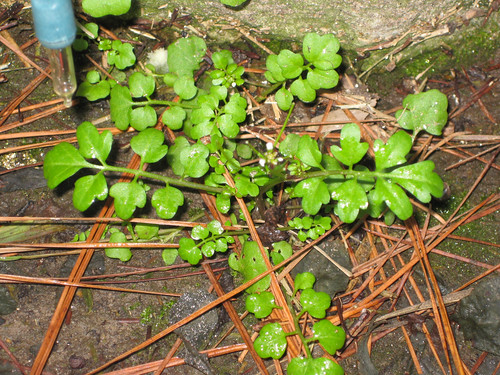
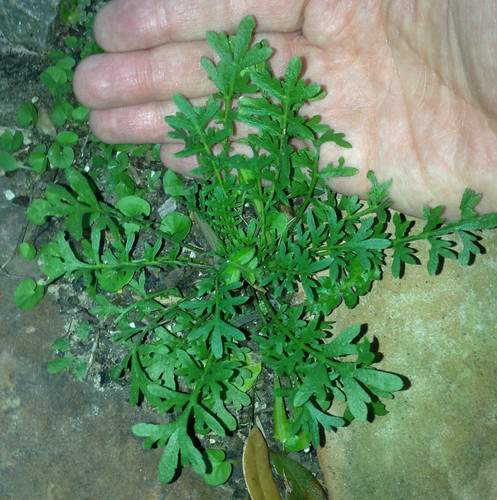
More young bittercress plants.
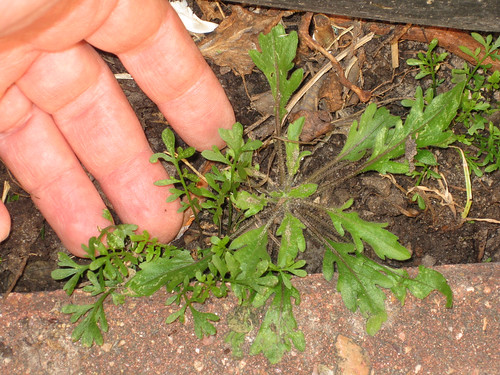
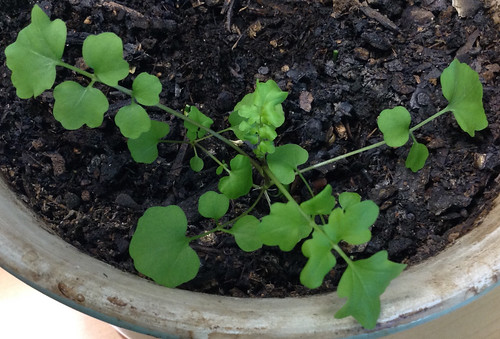
Closeup of seed pods and flowers.
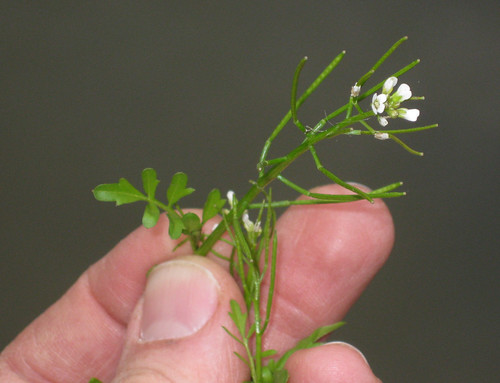
Close-up of seedpods.
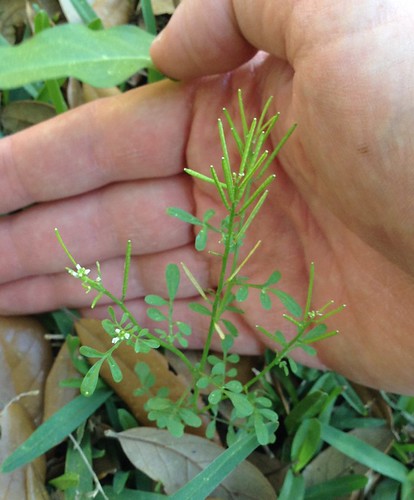
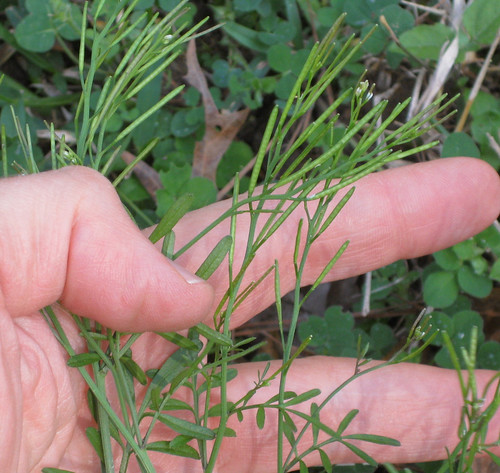
Texas distribution, attributed to U. S. Department of Agriculture. The marked counties are guidelines only. Plants may appear in other counties, especially if used in landscaping.
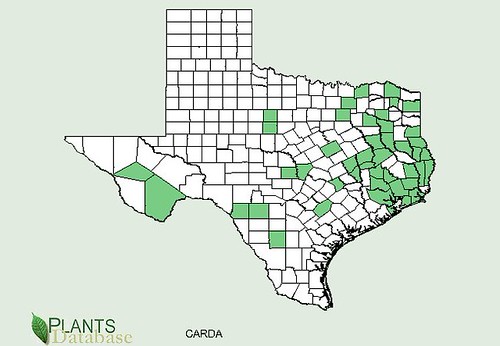
North American distribution, attributed to U. S. Department of Agriculture.
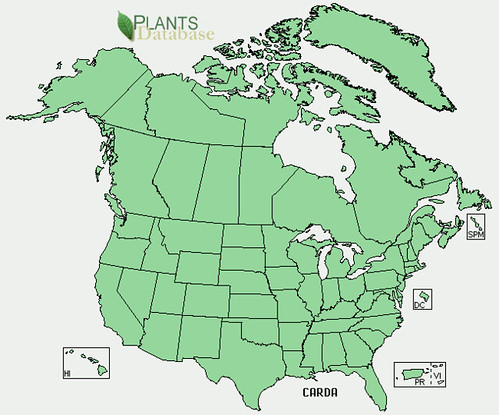
Bittercress pops up when most everything else is brown. Look for it yards, flowerbeds and assorted border areas where low growing plants aren't swallowed up by taller stuff. I've been known to buy a potted plant on clearance just because it had some nice bittercress growing in the pot.
Bittercress comes up with a rosette of deeply lobed leaves and small, white flowers which twist up the stem like a spiral staircase. After the flowers come long, thin seedpods which explode open on touch once they've matured and turned brown.
Bittercress has a wonderful horseradish flavor that is great for spicing up sandwiches and salads. The young leaves can be eaten raw while older, larger leaves can be cooked like traditional mustard greens. The seeds are too small to be ground into a mustard-style condiment but the tender, young seedpods are as good or better than the young leaves for a raw blast of flavor.
The leaves and seedpods must be chewed for a bit for the full, powerful flavor to develop. Their taste doesn't come from chemicals found in the plant but rather from the product of these chemicals as they undergo a reaction initiated by chewing. Chewing smashes the cell walls, releasing the compounds so they can react with the oxygen and water in your mouth, resulting in the excellent horseradishy punch.
Buy my book! Outdoor Adventure Guides Foraging covers 70 of North America's tastiest and easy to find wild edibles shown with the same big pictures as here on the Foraging Texas website.

